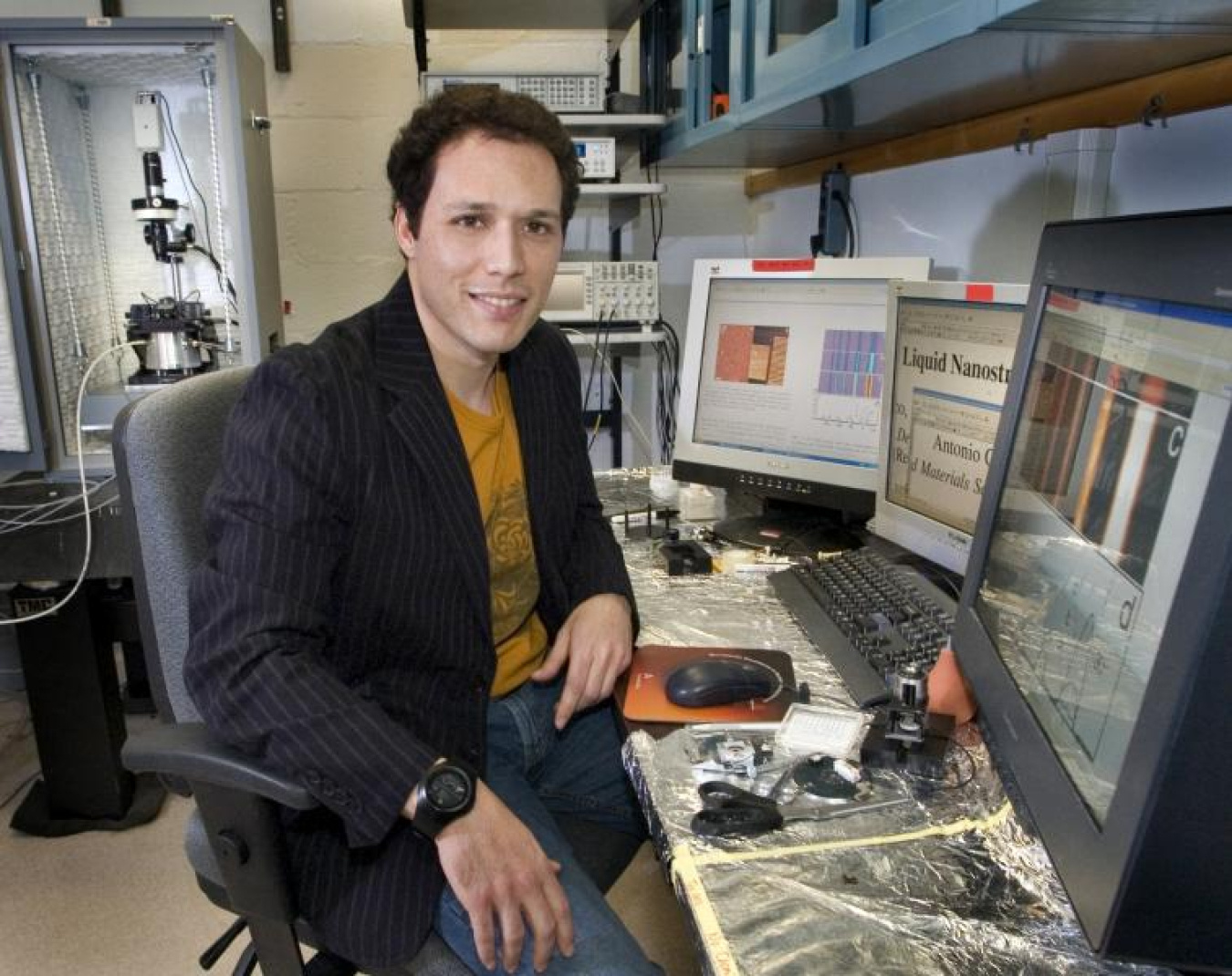
Antonio Checco | Source: Brookhaven National Lab
Ralph Waldo Emerson once noted, “Men love to wonder, and that is the seed of science.”
At the Department of Energy, our National Laboratories’ scientists, researchers and engineers have big imaginations - they are at the forefront of scientific innovation and ingenuity. Every day, they’re advancing a breadth of fields from clean energy and energy efficiency to nanomaterials and nuclear and particle physics.
Today, the Energy Blog is launching a new series, 10 Questions, with a simple goal in mind – to introduce you to our scientists and their incredible work.
At Brookhaven National Lab, Antonio Checco is a physicist in the Condensed Matter Physics & Materials Science Department’s Soft Matter Group. His research interests include the nanoscale effects of wetting and capillary phenomena, polymer thin-films, nanopatterning of self-assembled monolayers and scanning probe microscopy techniques. He recently took some time to explain wetting on the nanoscale, share some advice for students and tell us about his favorite movie scientist.
Question: What sparked your interest in pursuing a career in science?
Antonio Checco: I have been fascinated by natural phenomena since my early childhood. I remember in particular being obsessed with observing the universe and building telescopes.
Q: You’re a member of the Soft Matter Group at BNL – why did you choose this field?
AC: I made the choice at the time of my Masters in Italy. I decided to work on the physics of liquid crystals (the materials used for making flat TV panels) because I found the topic attractive. Moreover, it provided me with the opportunity to undertake an internship at the Collège de France laboratory in Paris, then directed by the Nobel Laureate Pierre-Gilles de Gennes, one of the founding fathers of soft matter. That experience was very formative and life-changing for me as I later decided to move to Paris where I eventually received my doctorate from the Universite’ Pierre et Marie Curie.
Q: Do you have any advice for students who are interested in becoming scientists?
AC: I strongly encourage students to seize every opportunity to work directly with scientists. It will allow them to become familiar with the methodology of scientific research as well as the compelling scientific questions of our time. Brookhaven and other National Laboratories provide that opportunity through various internship programs.
Q: Tell us about wetting on the nanoscale – how does this work? What do you hope it will lead to?
AC: Wetting refers to the study of how a liquid behaves when placed in contact with a solid surface. Understanding and controlling these phenomena have direct implications on many aspects of our everyday life. For instance, if we decide to repaint the house we expect the paint to spread very easily on the walls, whereas we want our jackets to repel raindrops if we get caught in a rainstorm.
Although we understand relatively well the physics of wetting at the human scale, the picture is less clear when things shrink to the size of a nanometer (one billionth of a meter). Indeed, a drop of liquid that small behaves differently from its macroscopic counterpart mainly because the drop size is comparable to the distance at which the liquid molecules can “feel” each other through long-range electromagnetic interaction. This interaction significantly alters the shape of nanometer-scale drops as my collaborators and I have observed in the laboratory. The good news is we found that this effect can be accurately modeled by accounting for the long-range molecular interactions. However, we are just starting to get a glimpse at these nanoscale phenomena and much is still left to explore!
These studies may benefit all those nanotechnologies that employ tiny liquid droplets for various purposes, including mediating the assembly of nanostructures or transporting biomolecules along very narrow channels (for example, DNA sequencing applications).
Q: What else are you working on right now?
AC: Besides the aforementioned studies, I am exploring methods for controlling the nanoscale morphology of thin films of plastics known as block copolymers and conjugated polymers. This research may lead to new high-density data storage media or to more efficient plastic solar cells.
Q: What is it like working at the National Synchrotron Light Source?
AC: The National Synchrotron Light Source (NSLS) is a very stimulating workplace. It is a world-class facility where, with the help of local top-notch scientists, I use intense beams of X-rays to unveil the microscopic properties of soft matter. It also provides a venue for the brightest scientists from all over the world to meet and discuss scientific problems.
Q: Changing gears slightly for next couple questions – what can you never start a day at the lab without?
AC: A foamy cup of cappuccino.
Q: Do you have a favorite fictional scientist?
AC: I have a few, but I would pick Doc Brown from Back to the Future.
Q: What do you enjoy doing in your free time?
AC: Windsurfing, biking, reading and photography.
Q: Last question, why is your desk wrapped in aluminum foil?
AC: On that desk we mount the samples as well as the tips onto the atomic force microscope. In the past we had lots of problems with static electricity build up caused by walking on the plastic floor of the room. That was damaging the sensitive current amplifier of the microscope every time we were mounting the tips. So we covered the table with aluminum foil and then we grounded them to get rid of the static. Perhaps to make it look nicer and sleek we should have got a stainless steel desk…
Find out more about Dr. Checco’s work and other Brookhaven National Lab projects at www.bnl.gov.